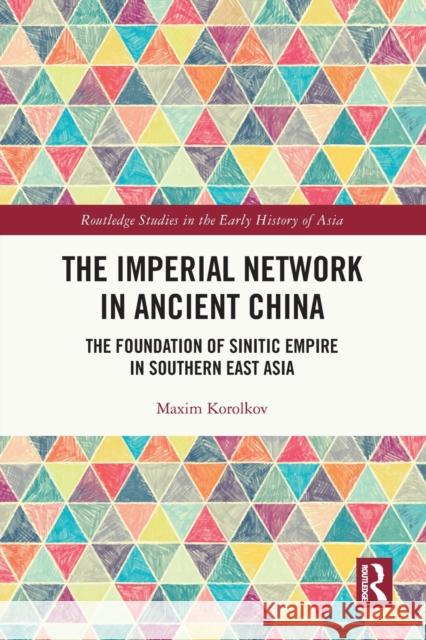The Imperial Network in Ancient China: The Foundation of Sinitic Empire in Southern East Asia » książka
The Imperial Network in Ancient China: The Foundation of Sinitic Empire in Southern East Asia
ISBN-13: 9780367654290 / Angielski
The Imperial Network in Ancient China: The Foundation of Sinitic Empire in Southern East Asia
ISBN-13: 9780367654290 / Angielski
(netto: 195,06 VAT: 5%)
Najniższa cena z 30 dni: 201,44
ok. 22 dni roboczych
Bez gwarancji dostawy przed świętami
Darmowa dostawa!
This book examines the emergence of imperial state in East Asia during the period ca. 400 BCE – 200 CE as a network-based process, showing how the geography of early interregional contacts south of the Yangzi River informed the directions of Sinitic state expansion.
This book examines the emergence of imperial state in East Asia during the period ca. 400 BCE–200 CE as a network-based process, showing how the geography of early interregional contacts south of the Yangzi River informed the directions of Sinitic state expansion.
Drawing from an extensive collection of sources including transmitted textual records, archaeological evidence, excavated legal manuscripts, and archival documents from Liye, this book demonstrates the breadth of human and material resources available to the empire builders of an early imperial network throughout southern East Asia – from institutions and infrastructures, to the relationships that facilitated circulation. This network is shown to have been essential to the consolidation of Sinitic imperial rule in the sub-tropical zone south of the Yangzi against formidable environmental, epidemiological, and logistical odds. This is also the first study to explore how the interplay between an imperial network and alternative frameworks of long-distance interaction in ancient East Asia shaped the political-economic trajectory of the Sinitic world and its involvement in Eurasian globalization.
Contributing to debates around imperial state formation, the applicability of world-system models and the comparative study of empires, The Imperial Network in Ancient China will be of significant interest to students and scholars of East Asian studies, archaeology and history.











